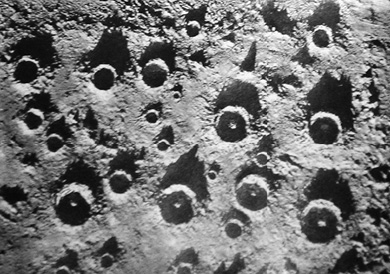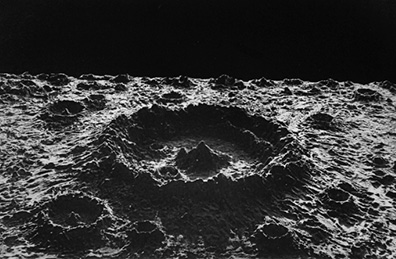
From the very dawn of the new technology, photographers sought to capture images of the heavens. In 1839 Louis-Jacques-Mandé Daguerre—inventor of the daguerreotype—attempted to shoot the moon, with little success. As photographic technology developed throughout the nineteenth century, it became an important tool in many branches of scientific inquiry. James Nasmyth’s book, The Moon: Considered as a Planet, a World, and a Satellite, is one of the most curious examples of Victorian scientific publishing.
When it appeared in 1874, The Moon was one of the earliest books to include photo-mechanical prints—photographic images printed by a mechanical press rather than separately printed photographs pasted into each copy of a book. At first glance, these illustrations appear to be images of the surface of the moon, but the clarity and detail in these images is far beyond the abilities of telescopic photography at the time. Unable to produce actual photographs of the moon’s surface, Nasmyth constructed plaster models of moonscapes based on his own observations and the published accounts of other astronomers. These models were then photographed to illustrate his theories regarding the formation of craters and other geological features of Earth’s nearest celestial neighbor.
Nasmyth’s book was no hoax; he made no attempt to disguise his methods. Still, there is something deeply fascinating in the way he employed the new technology of photography to lend an air of authority to his work. For example, the side-by-side photographs of “Crater of Vesuvius. 1865” and “Normal Lunar Crater” invite the reader to note the similarities between geological formations on Earth and the Moon. But these are photographs of models built for the very purpose of displaying those similarities. (“Full Moon” is the only photograph of the real Moon in the whole book.) A circular argument in photographic form. Similarly, Nasmyth photographed a human hand, an apple, and a cracked glass sphere to advance his argument about how the features of the Moon were created.







James Nasmyth. The Moon: Considered as a Planet, a World, and a Satellite. London: John Murray, 1874. Images reprinted with permission from Amherst College Archives & Special Collections.
Michael Kelly has been the Head of the Archives & Special Collections at Amherst College since April 2009.
Click here to purchase Issue 01




